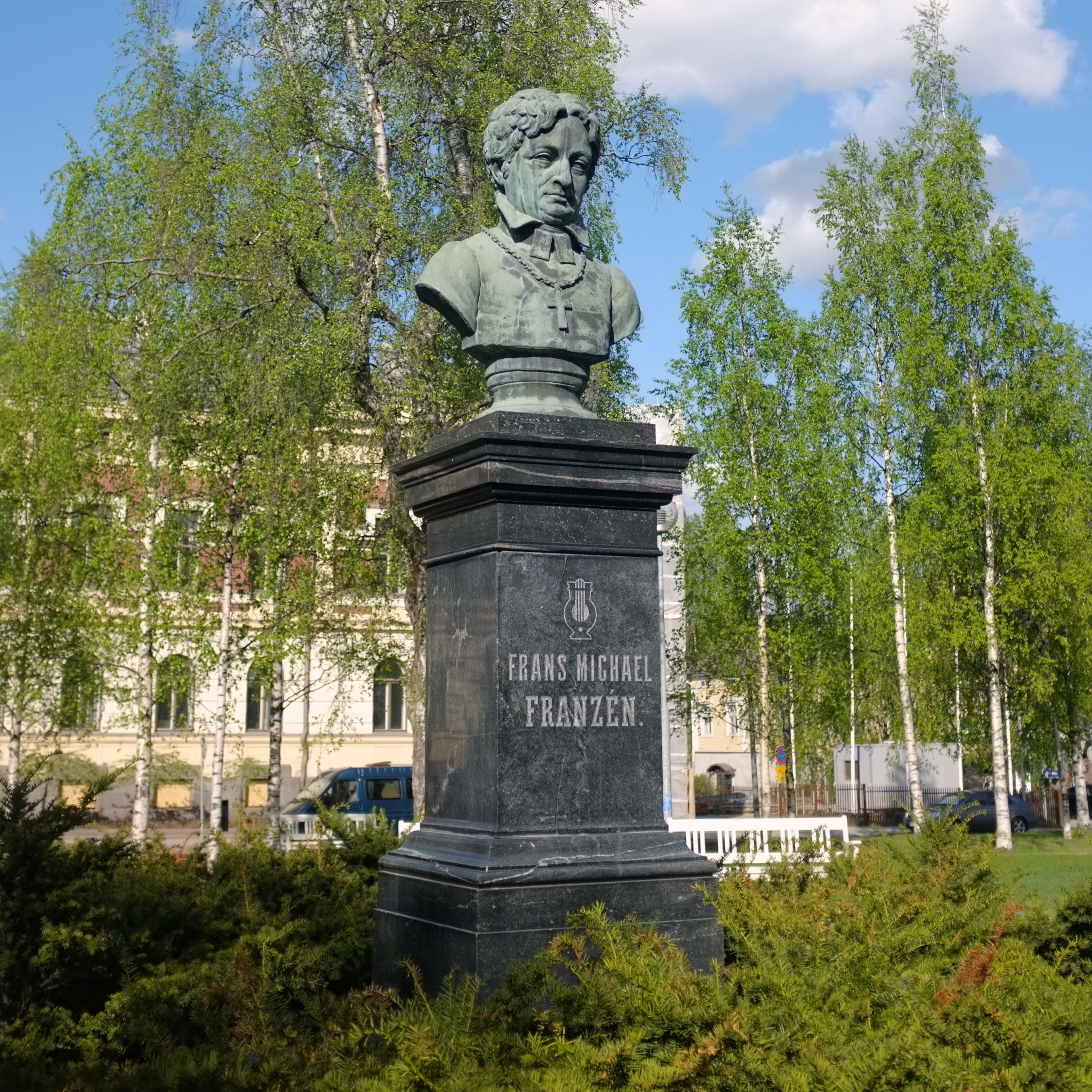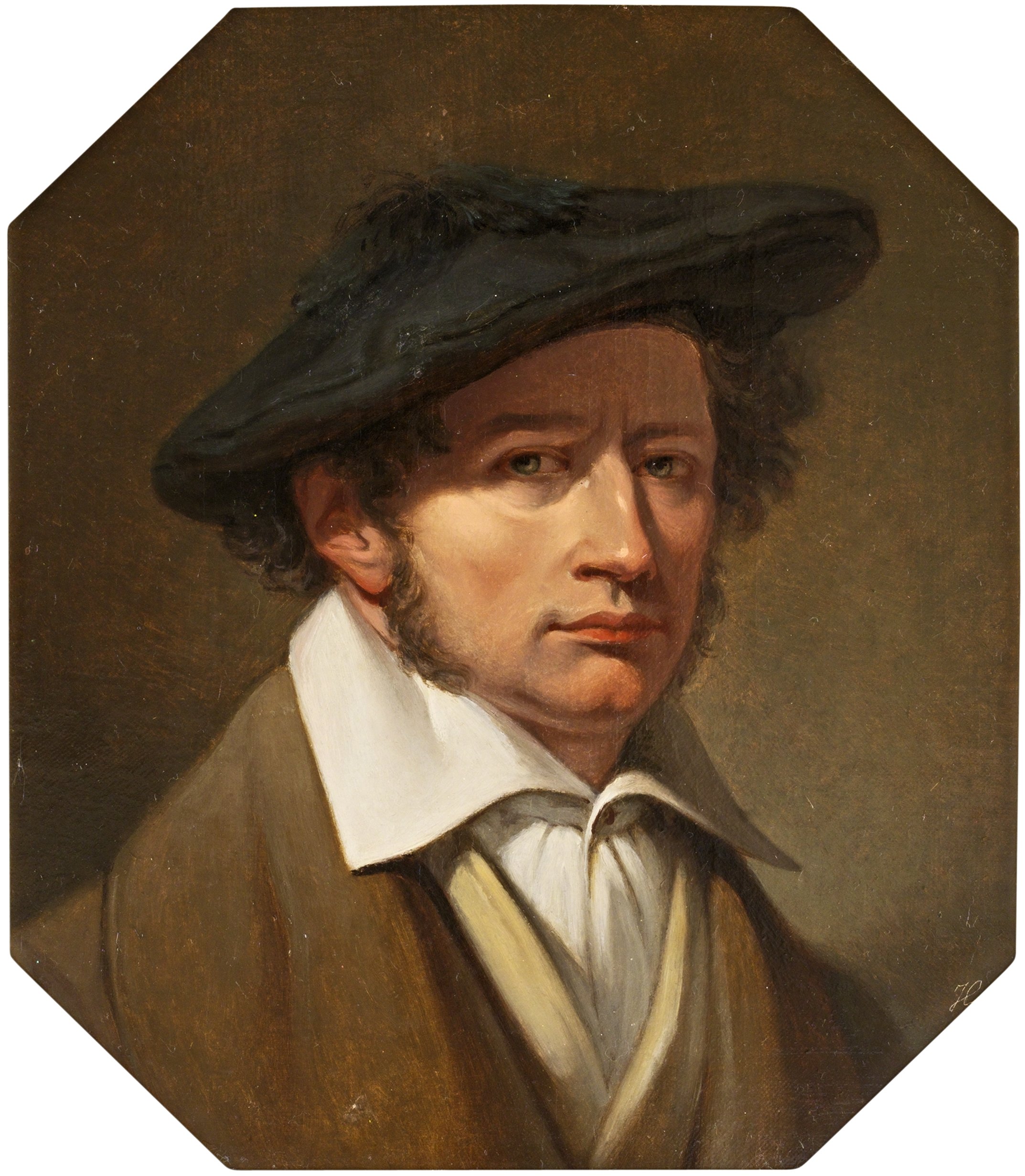|
Frans Michael Franzén
Frans Michael Franzén (9 February 1772 – 14 August 1847) was a Swedish-Finnish poet and clergyman. He served as the Bishop of the Diocese of Härnösand. Biography Franzén was born in Oulu ( sv, Uleåborg), Northern Ostrobothnia, Sweden (now part of Finland). At thirteen he entered the Royal Academy of Turku, where he attended the lectures of Henrik Gabriel Porthan (1739–1804), a pioneer in the study of Finnish history and folklore. He graduated in 1789, and became ''eloquentiae docens'' in 1792. Three years later he started on a tour through Denmark, Germany, France and England, returning in 1796 to accept the office of university librarian at Turku in Finland. In 1801 he became professor of history and ethics, in 1808 he was elected a member of the Swedish Academy and in 1815 a member of the Royal Swedish Academy of Sciences. He was a member of Pro Fide et Christianismo, a Christian education society. Finland was ceded by Sweden to Russia in 1809 after the Finnish War, ... [...More Info...] [...Related Items...] OR: [Wikipedia] [Google] [Baidu] |
Johan Gustaf Sandberg
Johan Gustaf Sandberg (13 May 1782 – 26 June 1854) was a Swedish painter. He was foremost a history painter and used settings from Norse mythology and Swedish history. His most widely known work in this area are his frescoes in Uppsala Cathedral that depict the Swedish king Gustav Vasa. In addition to his history paintings, Sandberg painted a number of portraits. Biography Sandberg became a student at the Royal Swedish Academy of Arts preparatory school (''Konstakademiens principskola'') in 1794. After completing his studies there, he moved on to the Academy's antikskola (in which students learned to paint sculptures from ancient history) in 1801. At the same time, Sandberg studied music and learned to play keyboard instrument A keyboard instrument is a musical instrument played using a keyboard, a row of levers which are pressed by the fingers. The most common of these are the piano, organ, and various electronic keyboards, including synthesizers and digital piano ...s ... [...More Info...] [...Related Items...] OR: [Wikipedia] [Google] [Baidu] |
Swedish Academy
The Swedish Academy ( sv, Svenska Akademien), founded in 1786 by King Gustav III of Sweden, Gustav III, is one of the Swedish Royal Academies, Royal Academies of Sweden. Its 18 members, who are elected for life, comprise the highest Swedish language authority. Outside Scandinavia, it is best known as the body that chooses the laureates for the annual Nobel Prize in Literature, awarded in memory of the donor Alfred Nobel. History The Swedish Academy was founded in 1786 by King Gustav III of Sweden, Gustav III. Modelled after the Académie française, it has 18 members. It is said that Gustaf III originally intended there to be twenty members, half the number of those in the French Academy, but eventually decided on eighteen because the Swedish expression ''De Aderton'' – 'The Eighteen' – had such a fine solemn ring. The academy's motto is "Talent and Taste" (''"Snille och Smak"'' in Swedish). The academy's primary purpose is to further the "purity, strength, and sublimity of ... [...More Info...] [...Related Items...] OR: [Wikipedia] [Google] [Baidu] |
Anders Abraham Grafström
Anders Abraham Grafström (10 January 1790 – 24 July 1870) was a Swedish historian, priest and poet. Life Grafström was born in Sundsvall in Västernorrland County, Sweden. He studied at Uppsala University, where he was enrolled in 1809 and became a master's degree in 1815. In 1819, he was the library secretary of Uppsala University. The following year he was named as a lecturer in history at the university, and he later taught at the Military Academy Karlberg. In 1830 he was ordained and in 1835 he was appointed as a parish priest at Umeå in Västerbotten where he lived until his death. In 1825, he received the grand prize from Swedish Academy for a poem about the wedding of Crown Prince Oscar and was admitted into the Academy in 1839, occupying Seat 6. Grafström belonged to the literary circle centred on salon hostess. Malla Silfverstolpe (1782–1861). He wrote a famous biography of poet Frans Michael Franzén. Some of Grafström's poetry was set to music ... [...More Info...] [...Related Items...] OR: [Wikipedia] [Google] [Baidu] |
Svenskt Biografiskt Lexikon
''Svenskt biografiskt lexikon'' () is a Swedish biographical dictionary, started in 1917. The first volume, covering names ''Abelin'' to ''Anjou'', was published in 1918. As of 2017, names from A to S are covered. Volumes # ABELIN – ANJOU (1918) # ANKARCRONA – BECKER (1920) # BECK – FRIIS – BERNDES (1922) # BERNDES – BLOCK (1924) # BLOM – BRANNIUS (1925) # BRANT – BYGDÉN (1926) # BÜLOW – CEDERGREN (1927) # CEDERHIELM – CORNELIUS (1929) # CORNELL – DAL (1931) # DíALBEDYHLL – DE LA GARDIE (1931) # DE LA GRANGE – EBERSKÖLD (1945) # EBERSTEIN – EKMAN (1949) # EKMAN – ENWALL (1950) # ENVALLSSON – FAHLBECK (1953) # FAHLBERG – FEUK (1956) # FICH – GEHLIN (1964–1966) # GEIJER – HALL (1967–1969) # HALLARDT – HEURGREN (1969–1971) # HEURLIN – INGE (1971–1973) # INGEBORG – KATARINA (1973–75) # KATARINA – KÖNIGSMARCK (1975–77) # KÖNIGSMARCK – LILJA (1977–79) # LILJEBLAD – LJUNGBERGER (1980–1981) # LJUNGDAHL – MALMROS (19 ... [...More Info...] [...Related Items...] OR: [Wikipedia] [Google] [Baidu] |
Pehr Brandell
Pehr Brandell, also known as Per, Petrus, and Petter, (1 January 1781 – 4 May 1841) was a Swedish Lutheran priest known for his role in the 19th-century revivalist movement in Norrland. Biography Upbringing, education, and work Brandell was born in 1781 in Piteå rural parish (), Portsnäs, Sweden, to tailor Per Brandell and Katarina Olsdotter. He grew up in an Old Reader movement () home, part of the Pietist movement growing in Norrland at the time. As a young man, he is said to have stopped the festivities at a dance to warn the attendees, comparing the activity to the worship of the golden calf in the Bible. At 21 years of age he had a spiritual awakening after a crisis of faith. Known for his almost verbatim recollection of Luther's sermons, he was persuaded to study theology at the seminary in Uppsala, completing his education within a year in 1812 after some interruptions to his education due to the Finnish War in 1808. Philosopher Christopher Jacob Boström, ... [...More Info...] [...Related Items...] OR: [Wikipedia] [Google] [Baidu] |
Carl Olof Rosenius
Carl Olof Rosenius (February 3, 1816 – February 24, 1868) was a Swedish lay preacher, author and editor of the monthly ''Pietisten'' (The Pietist) from 1842 to 1868.''Twice-Born Hymns'' by J. Irving Erickson, (Chicago: Covenant Press, 1976) p. 111. He was one of the country's most widely-heard preachers of his day and has been described as being of "extraordinary importance for the low-church evangelical revival not only in Sweden but also in the other Nordic countries". Biography Family and childhood Rosenius was born in Nysätra in Västerbotten while his father, Anders Rosenius, was serving there as a parish pastor. His mother, Sara Margareta Norenius, was the daughter of Olof Norenius, a clergyman. Before Rosenius was born, his mother dreamed that he would be used by God. He was the third child of seven. His six siblings included Eric Andreas – who died as an infant – another brother also named Eric Andreas, Claes Johan, Sara Magdalene, Margareta Eliana, and . Tw ... [...More Info...] [...Related Items...] OR: [Wikipedia] [Google] [Baidu] |
Bishop Of Härnösand
A bishop is an ordained clergy member who is entrusted with a position of authority and oversight in a religious institution. In Christianity, bishops are normally responsible for the governance of dioceses. The role or office of bishop is called episcopacy. Organizationally, several Christian denominations utilize ecclesiastical structures that call for the position of bishops, while other denominations have dispensed with this office, seeing it as a symbol of power. Bishops have also exercised political authority. Traditionally, bishops claim apostolic succession, a direct historical lineage dating back to the original Twelve Apostles or Saint Paul. The bishops are by doctrine understood as those who possess the full priesthood given by Jesus Christ, and therefore may ordain other clergy, including other bishops. A person ordained as a deacon, priest (i.e. presbyter), and then bishop is understood to hold the fullness of the ministerial priesthood, given responsibility by ... [...More Info...] [...Related Items...] OR: [Wikipedia] [Google] [Baidu] |
Stockholm
Stockholm () is the Capital city, capital and List of urban areas in Sweden by population, largest city of Sweden as well as the List of urban areas in the Nordic countries, largest urban area in Scandinavia. Approximately 980,000 people live in the Stockholm Municipality, municipality, with 1.6 million in the Stockholm urban area, urban area, and 2.4 million in the Metropolitan Stockholm, metropolitan area. The city stretches across fourteen islands where Mälaren, Lake Mälaren flows into the Baltic Sea. Outside the city to the east, and along the coast, is the island chain of the Stockholm archipelago. The area has been settled since the Stone Age, in the 6th millennium BC, and was founded as a city in 1252 by Swedish statesman Birger Jarl. It is also the county seat of Stockholm County. For several hundred years, Stockholm was the capital of Finland as well (), which then was a part of Sweden. The population of the municipality of Stockholm is expected to reach o ... [...More Info...] [...Related Items...] OR: [Wikipedia] [Google] [Baidu] |
Klara Church
The Church of Saint Clare or Klara Church ( sv, Klara kyrka) is a church in central Stockholm. Since 1989, the Swedish Evangelical Mission is responsible for its activities. The Church of Saint Clare is located on Klara Västra Kyrkogata in the Klara area in lower Norrmalm. The Klara area (also known in Swedish as Klarakvarteren) takes its name from the church. This name has become synonymous with the old city that once occupied lower Norrmalm. History The Convent and Church of St. Clare was founded on the site in 1280s. In 1527, Gustav Vasa, King of Sweden, had the church and convent torn down. Construction of the current church started in 1572 under Johan III. The graveyard which is almost surrounded now by modern buildings was started in the 17th century. The church tower was built as part of restoration work in the 1880s and is tall.Hall, Thomas (2008). ''Stockholm: The Making of a Metropolis''. Routledge. p. 207 The church contains a 35-bell carillon, which was cast b ... [...More Info...] [...Related Items...] OR: [Wikipedia] [Google] [Baidu] |
Diocese Of Strängnäs
The Diocese of Strängnäs ( sv, Strängnäs stift) is a part of the Lutheran Church of Sweden and has its seat in Strängnäs Cathedral in Strängnäs, south of Lake Mälaren. The diocese is made up of the two provinces Närke and Södermanland (except for eastern Södermanland, which belongs to Stockholm County and the Diocese of Stockholm). The diocese was first a Latin Catholic suffragan of the then Danish Diocese of Lund, which in 1104 was elevated to an archdiocese and became the Metropolitan see of all of Scandinavia. From 1164 on Strängnäs was suffragan to the Swedish archbishop of Uppsala. It was established during the 12th century by the English missionary Saint Eskil. Catholic Diocese Missionary Antecedents In 829 Ansgar and his companion, Witmar, having reached Björkö (Birka), an island in Lake Mälaren and a great centre of trade, were well received and made many converts. Returning to Germany in 831, Ansgar was made first Archbishop of Hamburg by Gregory ... [...More Info...] [...Related Items...] OR: [Wikipedia] [Google] [Baidu] |







